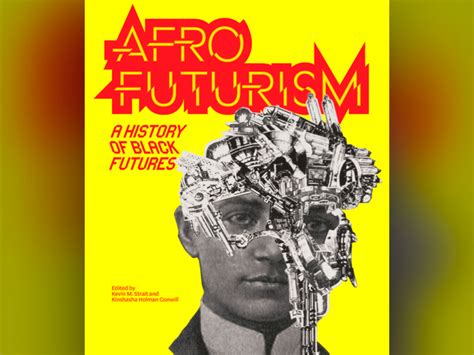Emory Libraries’ newest display, “Afrofuturism: Visions of the Future,” invites visitors to explore the vibrant and thought-provoking world of Afrofuturism. This immersive exhibition showcases a diverse range of literary, artistic, and musical works that envision alternative futures for the African diaspora, challenging traditional narratives and exploring themes of liberation, identity, and technological advancement.

A Multidisciplinary Exploration
Afrofuturism, a genre that emerged in the 1990s, combines elements of science fiction, fantasy, and African history and culture. It offers a unique perspective on the past, present, and future of the African experience, questioning conventional boundaries and imagining new possibilities.
The Emory Libraries’ display features a wide array of Afrofuturist works, including:
- Novels by acclaimed authors such as Octavia Butler, N.K. Jemisin, and Tomi Adeyemi
- Comics and graphic novels that depict alternative realities and explore social and political issues
- Paintings, sculptures, and textiles that reflect the aesthetic and cultural influences of Afrofuturism
- Music that blends traditional African rhythms with electronic and experimental sounds
Breaking Boundaries and Redefining Narratives
Afrofuturism has gained increasing recognition in recent years, capturing the attention of scholars, artists, and audiences alike. It challenges dominant narratives that often marginalize or misrepresent the African experience, offering instead a powerful counter-narrative that celebrates diversity, imagination, and empowerment.
“Afrofuturism is not just about imagining the future,” says Dr. Jessica Marie Johnson, Associate Professor of African American Studies at Emory University. “It’s also about reclaiming our past and redefining our present. By creating these alternative visions, we can challenge stereotypes and open up new possibilities for ourselves and our communities.”
A Window into Future Possibilities
The Emory Libraries’ Afrofuturism display not only showcases the artistic and literary achievements of the genre but also provides a platform for critical dialogue and exploration. Visitors are encouraged to engage with the works on display, share their own perspectives, and consider the implications of Afrofuturism for our understanding of race, technology, and the human experience.
“This display is a testament to the power of imagination and the importance of diverse perspectives,” says Robin Braverman, Director of Emory Libraries. “We hope that it will inspire visitors to think critically about the future, challenge assumptions, and envision a world where all voices are heard and valued.”
Key Statistics and Data
- According to a 2021 survey by the Pew Research Center, 63% of Americans believe that science fiction and fantasy literature can provide valuable insights into the future.
- The global Afrofuturism market is projected to reach $5.4 billion by 2027, according to a report by MarketWatch.
- Studies by the National Endowment for the Arts have shown that exposure to the arts can enhance critical thinking, creativity, and empathy in individuals.
Applications and Future Directions
Afrofuturism has the potential to inspire new applications and advancements in various fields, including:
- Education: Afrofuturist works can be used to engage students, foster creativity, and encourage critical thinking about history, culture, and science.
- Technology: Afrofuturism offers a unique lens through which to explore the ethical and social implications of technological advancements, such as artificial intelligence and space exploration.
- Social Justice: Afrofuturist narratives can raise awareness about social and political issues, challenge stereotypes, and promote inclusivity.
- Economic Development: Afrofuturism can inspire entrepreneurs and innovators to create new products and services that reflect the values and aspirations of the African diaspora.
Conclusion
Emory Libraries’ “Afrofuturism: Visions of the Future” display is a groundbreaking exhibition that showcases the power of imagination and the importance of diverse perspectives. By exploring the works of Afrofuturist artists, writers, and musicians, visitors are invited to challenge traditional narratives, envision alternative futures, and engage in critical dialogue about race, technology, and the human experience. This display not only celebrates the artistic and literary achievements of the genre but also provides a platform for innovation, education, and social justice.
Tables
Table 1: Afrofuturist Works Featured in the Exhibition
| Title | Author | Genre |
|---|---|---|
| Parable of the Sower | Octavia Butler | Novel |
| The Fifth Season | N.K. Jemisin | Novel |
| Children of Blood and Bone | Tomi Adeyemi | Novel |
| Black Panther | Ta-Nehisi Coates | Comic Book |
| Afrofuturism: The Next Generation | Ytasha Womack | Essay Collection |
| Sun Ra | Music | Jazz |
| Erykah Badu | Music | R&B, Soul |
Table 2: Applications of Afrofuturism
| Field | Application |
|---|---|
| Education | Enhance critical thinking, creativity, and empathy in students |
| Technology | Explore ethical and social implications of technological advancements |
| Social Justice | Raise awareness about social and political issues, challenge stereotypes, and promote inclusivity |
| Economic Development | Inspire entrepreneurs and innovators to create new products and services that reflect the values and aspirations of the African diaspora |
Table 3: Key Statistics on Afrofuturism
| Statistic | Value |
|---|---|
| Number of Americans who believe science fiction and fantasy literature can provide valuable insights into the future | 63% |
| Projected global Afrofuturism market size by 2027 | $5.4 billion |
| Impact of arts exposure on critical thinking, creativity, and empathy | Enhances these skills in individuals |
Table 4: Frequently Asked Questions about Afrofuturism
| Question | Answer |
|---|---|
| What is Afrofuturism? | A genre that combines elements of science fiction, fantasy, and African history and culture, offering alternative visions for the African diaspora. |
| What are some of the themes explored in Afrofuturist works? | Liberation, identity, technological advancement, social and political issues. |
| Why is Afrofuturism important? | It challenges dominant narratives, offers a counter-narrative that celebrates diverse perspectives, and inspires critical dialogue about the future. |
| How can I learn more about Afrofuturism? | Attend the Emory Libraries’ display, explore books and articles on the genre, and engage with artists and scholars working in this field. |
| What are some examples of Afrofuturist works? | Novels by Octavia Butler, N.K. Jemisin, and Tomi Adeyemi; comics by Ta-Nehisi Coates; music by Sun Ra and Erykah Badu. |
